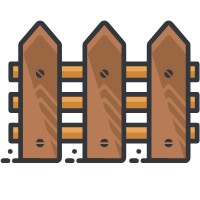A Guide to Retaining Wall Construction
Posted on: 11 July 2024
Retaining walls are a crucial part of landscaping and construction projects, providing both functional and aesthetic benefits. Whether you're looking to level out a sloped yard, prevent erosion or create visual interest in your outdoor space, retaining walls can help you achieve your goals. In this guide, we'll explore the ins and outs of retaining wall construction, from materials and design considerations to installation tips and maintenance best practices.
Materials
When it comes to building a retaining wall, there are several materials to choose from, each with its own advantages and considerations. Concrete blocks are a popular choice for their durability and ease of installation. Timber is another common option that provides a more natural look but requires regular maintenance to prevent rotting. Stone or brick retaining walls offer a timeless appeal but can be more labour-intensive to construct. Before selecting a material, consider factors such as cost, aesthetics and the overall purpose of the wall.
Design Considerations
Before starting the construction process, it's essential to carefully plan the design of your retaining wall. Consider factors such as local building codes, wall height and other considerations that may apply. Sloping backfill behind the wall can help reduce pressure on the structure and improve stability. Additionally, incorporating curves or terraces into the design can add visual interest and break up large expanses of wall.
Installation Tips
Proper installation is key to ensuring the longevity and effectiveness of your retaining wall. Start by excavating a trench for the base of the wall and compacting the soil to provide a stable foundation. Use geogrid or other reinforcement materials as needed to strengthen the structure and prevent bowing or shifting over time. As you build up layers of blocks or stones, make sure each course is level and securely anchored in place. Finish off with proper drainage solutions such as weep holes or gravel backfill to prevent water buildup behind the wall.
Maintenance Best Practices
Once your retaining wall is in place, regular maintenance is essential to keep it looking its best and functioning properly. Inspect the wall periodically for signs of damage, such as cracks, bulging or leaning. Address any issues promptly to prevent further deterioration. Clear away debris from drains and weep holes to ensure proper drainage flow. If you're using timber materials, treat them with preservatives every few years to protect your property against moisture damage.
With careful planning and attention to detail, you can create a beautiful and functional addition to your outdoor space. For more information, reach out to a local service, such as Affordable Fencing Brisbane.
Share
